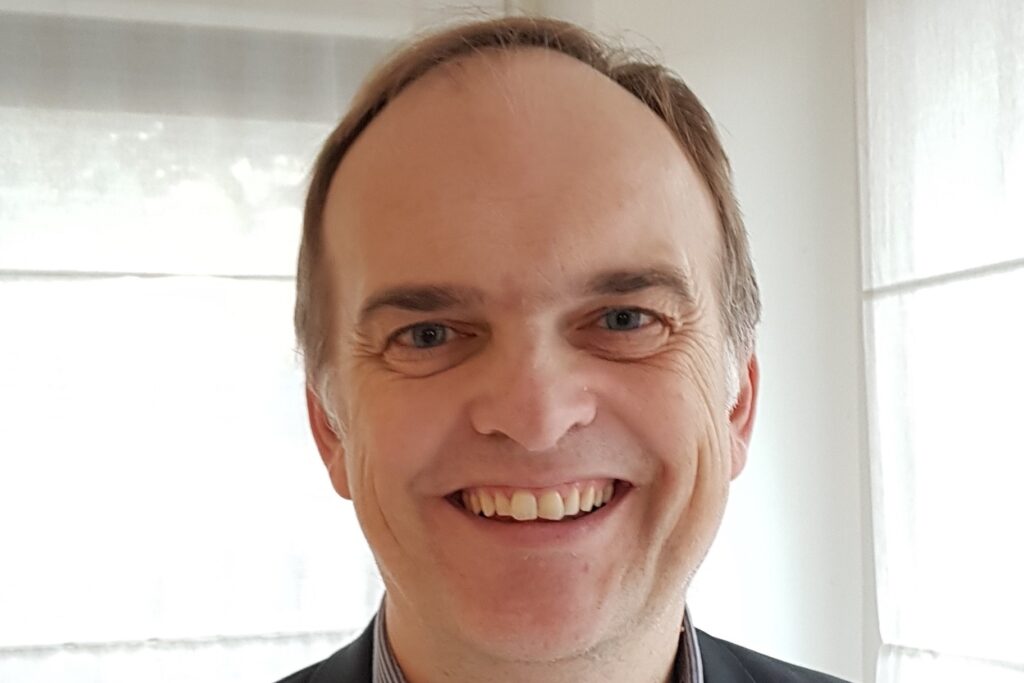
Unless you’ve lived an experience, can you teach it?
Alcatel-Lucent Enterprise (ALE) had ambitions to become more than just an IT partner. One of the world’s biggest telecommunications solutions companies, it wanted to offer more. It wanted to provide connectivity solutions to help businesses in their digital transformations. First, though, it needed to look inwards.
This is the story of how ALE transformed itself in order to transform others.
Alcatel-Lucent Enterprise has never had any resistance to change. Its story spans over a century, and any company that remains at the forefront of its industry for such a long period of time does one thing better than those who fall by the wayside: they adapt.
Headquartered in France, ALE connects over 50 million people at over 830,000 businesses in 100 countries across the globe. Its mission is to offer businesses of all sizes a tailored service that connects them through digital networking, communications and cloud solutions, whether it’s on-premise, in the cloud or a hybrid of the two.
Its 102-year history is one of expansion and innovation. The latest transformation has been driven, as always, by an ingrained desire to get ahead of the curve. Once again, ALE wanted to offer a deeper service. So it became more than just an IT partner.
“We are a company that has been through a lot of change and transformation and I think adaptation is really part of our DNA,” Jean-Pierre Roullin, Director of Information Technology System at ALE, tells Digital Bulletin. “I see us as an agent of transformation.
“What we do is go beyond just providing technology in the form of apps or infrastructure. We provide support to all departments in a company, so we know its processes and its touch points. That gives us the possibility to not only answer a specific need, but to see how it integrates in the whole chain, to anticipate the impact it might have. So we are able to push and help the processes themselves to be more efficient. Then we bring the technology to make it work.”
Roullin says ALE has a big advantage when meeting with customers to talk them through the transformation process: they’ve lived it themselves. ALE’s own digital transformation – a process that never ends – means it can go to clients with models which work, because they have been successful inside its own offices.
Tasked with leading the latest change at ALE was Sebastien Juras, Director of Digital Studio. As anyone who has been involved in a digital transformation knows, it’s never a smooth process. Things go wrong. It’s how you learn from the errors that will ultimately define its success.
“This is my favourite story,” says Juras of the transformation. “Because, like all good stories, this began with failure. We at ALE were thinking about our own digital transformation for a very long time – very in advance of when digital transformation was a buzz phrase. We identified the tools, the architecture, the framework that we wanted to put in place in order to support the digital transformation. Unfortunately, we failed. Nobody would understand what we wanted to do.
“So our first lesson was that a digital transformation must not be imposed. Digital transformation comes from a change of the culture at a company – so we must transform by example. Only then did we have great success.”
That example meant targeting a specific department, transforming its processes until the outcome was successful, and using that as a blueprint to spread the best practices throughout the remaining departments.

“This was absolutely marvellous,” Juras says. “I’d never seen so much enthusiasm from both the IT and Business departments to apply this digital transformation, and the outcome was amazing.”
Juras leads ALE’s Digital Studio and Digital Factory, where digital transformation best practices are aligned. The Studio brings together small teams of multi-skilled experts from the Business and IT departments, with teams assigned targets and given the autonomy to make decisions in order to meet them. Success or failure is based on short cycles of development, using data-led insights to measure how close each iteration is to meeting KPIs. If the trend is positive they carry on in that direction, if it’s negative the team pivots.
When targets have been reached, the team moves across to the Digital Factory, which is focussed on customer optimisation. It’s called a factory for a reason, as it manages a high-volume transaction process with a well-defined structure.
“What I like about what we are doing with the Factory and Studio is that they are offering on one side stability, and on the other side change,” Roullin says. “And we are doing that at the same time, so it’s not one or the other – it’s both of them. We have reliability and innovation, and the combination of the two is what I think will help us go forward and transform even further.”
As Roullin and Juras both point out, a digital transformation must enable a process that leads to a specific target. So, what was ALE’s? What solutions to what problems has its transformation provided?
“What we wanted to achieve was really to streamline our opportunity management process, but also rework our partner relationship management process,” says Roullin. “Finally, for our customer, a new way to aggregate all of the information that we have in all the different places into one single place. On these topics we have delivered concrete results and we are now deploying them.
“This process of experiment, fix, improve, repeat has been key for us to deliver our transformation. So I won’t say that right now we have finished transforming because you should always be transforming. But what we have is a set-up that is in place to accompany the transformation so that now it can occur rapidly and help us to be better and always move forward.”
Data. It makes the world go around, and as soon as organisations embrace that, the sooner they can transform. Data being gospel is one of the key lessons ALE has learned from its own transformation, and now it applies this to its clients when talking through their specific solutions. Data provides evidence that tools are either improving or hindering a process, and identifies where the value of the process is.
This is just one of the digital transformation best practices that Juras evangelises about: you can’t successfully transform without the necessary data. Collaboration is also high on Juras’s list. “It is important to build a team of experts from both the business department and IT, to enable a strong collaboration, and to give the means to this team to decide what is to be done,” he says. “It’s key that the experts have the full autonomy to take the decisions. To enable the transformation, you experiment quickly while developing in agile mode with short-cycle development. Thanks to the data, you can identify if you are going in the right direction or not.”
TATA CONSULTANCY SERVICES
ALE’s transformation has allowed the company to adapt at pace in a challenging and changing environment. While it’s kept its traditional offerings to customers, it’s added more as-a-service products, and has revamped the customer experience to make it more accessible, leveraging new technologies.
Because ALE understands the importance of collaboration, it knew it needed a strategic partner to help drive the transformation and its next wave of growth. It chose one it already had a longstanding relationship with: IT services giant Tata Consultancy Services (TCS). The Indian multinational comes armed with tech expertise and business intelligence, and the partnership with ALE was a perfect fit.
“For us it was really critical to bring in a partner who would bring us several things,” says Roullin. “First, a deep understanding of our business model, second an extensive experience in end-to-end services, from design to delivery of customer experience transformation. And, finally, a proven expertise in Salesforce technology with many customer engagements already performed. TCS, with whom we already partner on several projects, brought us a unique business transformation approach, enabling agility, and delivering this programme under a tight schedule and timeline.
“Our partnership with TCS helped us to achieve agility by adapting to the rapid change in business needs. We managed to drive revenue growth thanks to the analysis of our large database, which allowed us to increase the renewal of recurring business but also do up-sales. And finally we significantly improved the sales conversion by leveraging integrated customer insights.”
TCS is also a core part of the Studio and Factory, as Juras points out: “Thanks to their experience and their wide amount of resource available, they are able to quickly provide us expertise in some domains in whatever technology we are requesting. That was very appreciated. They are also able to provide us advice in some technology where we think that the technology can make a difference to the processes.
“Thanks to their agility we can implement short cycle development with them. They very quickly understand our needs and are able to realise some development within two weeks.”
The rapid increase of cloud-based storage options means telco solutions companies are at a hosting crossroads. ALE has embraced this, by once again calling on its own experience.
ALE used to have a communications system that was on-premise only, before adding a layer of cloud service on top of it. That layer has been increasing ever since. This provided ALE with a hybrid landscape, which allows the company the flexibility to move from one model to another without anything going wrong or being lost.

“Our strategy is clear,” says Roullin. “We want to host a maximum of our applications in the cloud so that we can reduce our costs and benefit from the flexibility of the cloud.
“I think this solution and the way we sell it and implement it is something that is really an advantage for our customers. I think this is what offers our customers a smooth journey in their transformation to the cloud while leveraging their existing material and allowing them to succeed.”
Roullin stresses there is no single answer, though. It’s not a one-size-fits-all process; customers’ needs are all unique, and their transformation may be best served by either on-premise or cloud, or they may be suited to a hybrid option. Due to ALE’s own adaptability, it is in a position to provide all three options to its customers.
Whichever methodology ALE’s customers opt for, one thing is clear: organisations have to choose a path or risk being left behind. It is a situation ALE could not countenance, which is why it was so aggressive with its own transformation.


“Nobody right now has the luxury to stay put and wait to adapt or change,” says Roullin. “This is true for big, medium, and small players, and I’m talking about the mindset and the willingness to change – the questioning and challenging of what you do. And by not changing agile methods or mindsets, you will at some point, I think, be out of the game because things are going too fast and you can’t stay still and wait for them to go through.”
ALE needed to adapt to stay relevant, and its story is one of great success. Because of this, it is now a story ALE is spreading to its millions of customers, helping businesses across the globe to embrace their own digital transformations. It has lived it, and now it is teaching it.


